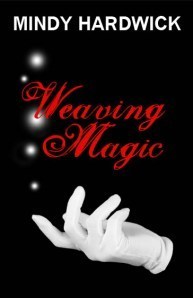The Wounded YA Character
I’ve been reading young adult contest entries for a RWA Chapter contest. For the most part, all of the entries understand the construction of a scene–the pacing is good, there is a hook and the story moves along. But there is something missing in all of the stories.
The originality and depth of the teen character is missing and with this lack of depth, there is also a lack of emotional pull which is so important to a YA story.
It’s been said that all stories have been written and this may be true. But as an author, it’s our job to tell a familiar story in a new way. How do we do this?
One way is to create a character who has a wound. For example, in my YA romance, WEAVING MAGIC, one of the comments I received on a regular basis from contest entries was, It’s so unique to see a main character who is sober. Most teen characters tell the story of their drinking, not their sobriety. We really liked how Christopher’s story is about his sobriety.
In order to create Christopher, I went to the place of his wound. Where had Christopher been hurt? When Christopher is ten, his Dad is taken to jail for embezzlement. Christopher loves his dad and having him ripped from his life is excruciating. At the same time, Christopher begins to drink and experiment with drugs with his childhood friend who becomes his dealer. I chose not to focus on Christopher’s drug using story because the bigger obstacle with the higher stakes was not drug use, it was how to stay sober once he gave up the drugs.
The other thing I did to write Christopher’s story is I drew on the experience I have working with the teens in the detention center poetry workshop. It is their voices I heard when I wrote Christopher’s sober story as so many of them are trying to stay sober.
As a YA writer, I think it’s very important to capture a teen as they are today–not as they were many years ago. A teen today has very different concerns and worries than a teen of the 1980′s. In 1985, I never worried about going to school after a date and finding my date had posted about it on Facebook and everyone knew I kissed them, or didn’t kiss them, or more! I also never worried about lock-downs in my school due to shootings.
In order to help you brainstorm an original character, some questions you can ask are:
Where is that character wounded?
What happened?
Was it an emotional wound?
A physical wound?
What scars does that character carry?
Who wounded the character?
What are they doing to compensate for the wound? What are the masks they are wearing so others won’t see the wound?
It’s not easy to dive into a character’s wound, as it often forces you, the author, to dive into your own, but I can guarantee that a character who is wounded and overcomes that wound is far more likely to engage a contest judge, editor or agent.






